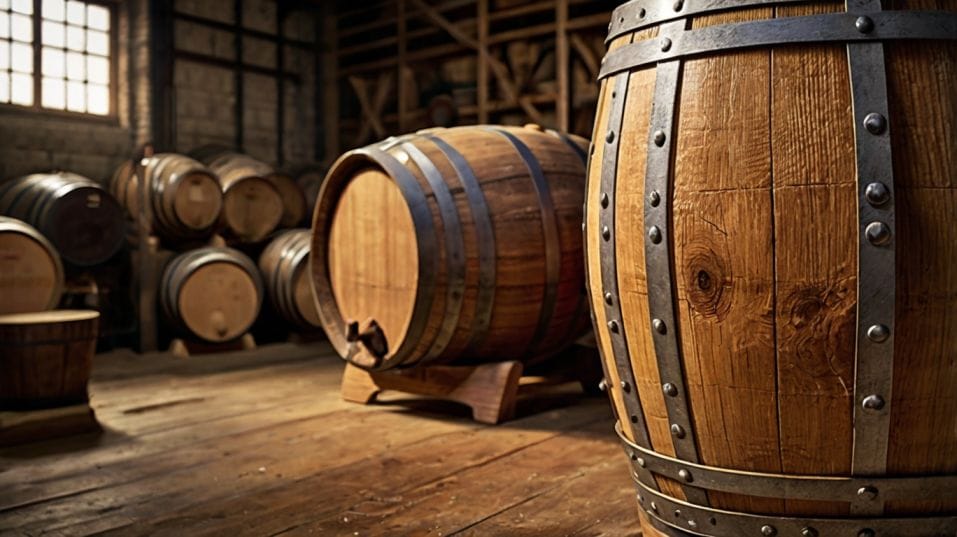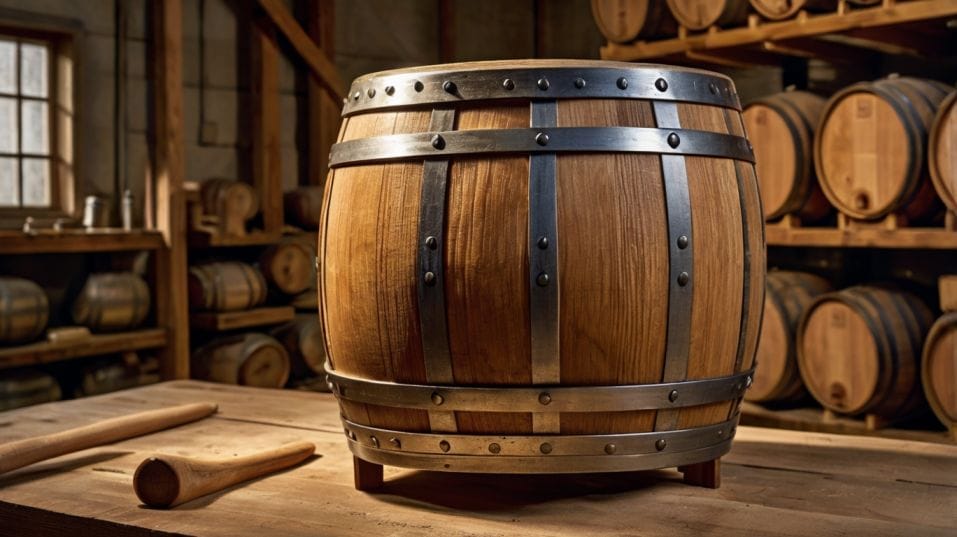What Makes a Barrel ‘Virgin’?
Discover how virgin oak barrels shape whiskey flavor, boost your tasting skills, and help you build a smarter collection with every sip.

What makes one whiskey bold and another whisper-soft? The answer might be hidden in the barrel. For curious drinkers just starting their whiskey journey, understanding “virgin oak” unlocks a whole new layer of flavor.
This isn’t just about wood—it’s about chemistry, craft, and control. Learn how a virgin barrel shapes your pour from day one, and why it’s one of the most powerful tools in a distiller’s arsenal.
What a “Virgin” Barrel Actually Is
A virgin barrel is exactly what it sounds like: a barrel made from brand-new oak that’s never been used to age any spirit, wine, or liquid of any kind.
The wood is clean. Untouched. No leftover flavors from sherry, no lingering rum notes, no ghost of bourbon past.
This matters more than most people realize. Once wood has been used—once it's absorbed alcohol, sugars, tannins, or acids from another liquid—it’s never the same.
Used barrels become gentler over time. Subtle. Soft-spoken. But virgin oak? It's loud. Assertive. It brings raw, powerful influence from day one.
When a distiller chooses virgin oak, they’re not just picking a container. They’re making a bold decision about flavor.
Virgin barrels are a way to imprint identity on a spirit quickly and intensely. That’s why they’re the legal requirement for bourbon in the U.S.—the spirit wouldn’t be what it is without them.

What Happens Inside the Barrel
New oak is packed with flavor compounds. But they don’t just jump into the whiskey on their own.
Before any whiskey touches the inside of a barrel, that wood is heat-treated—through toasting and charring—to bring out its deepest flavors and functional qualities.
Toasting and Charring
Toasting gently warms the staves, breaking down complex compounds like lignin and hemicellulose.
This releases flavors like vanilla, baking spices, and toasted nuts. Charring, on the other hand, is a direct flame blast that creates a layer of black carbon.
This char layer acts like a filter, catching sulfur compounds and impurities while also caramelizing the sugars inside the wood. It adds smoke, charred marshmallow, and sometimes a hint of charcoal minerality to the mix.
The result? Whiskey aged in virgin oak tends to be richer in vanilla, fuller in body, and darker in color.
You might notice caramel, baking spices, toasted coconut, or even pencil shavings and cigar box aromas, depending on how the barrel was built and treated.
And the impact isn’t slow. Virgin oak begins shaping the whiskey from the moment it's filled. You can taste the difference after just a few months—something you’ll rarely see with reused barrels.
Not All Virgin Barrels Are Equal
Here’s where it gets interesting—and where your knowledge really starts to matter. Just because a barrel is “virgin” doesn’t mean it behaves the same way every time.
The type of oak, how the wood was seasoned, how long it was toasted, how deep the char—all of that affects the final flavor.
Oak Type, Char Level, and Size
Most virgin barrels used in whiskey are made from American white oak (Quercus alba), prized for its high vanillin content and durability.
But European oak (like the kind used in Spanish sherry casks) is sometimes used virgin as well. It’s more tannic, more drying, and can bring out bolder spice and structure.
Then there’s the char level—commonly ranked from #1 to #4 (or higher). A light char preserves more of the wood’s natural toastiness and grain character.
A heavy char (#4, often called an “alligator char”) adds deeper smoke, burnt sugar, and a darker, more brooding profile.
Barrel size matters too. Smaller barrels mean more surface area contact between whiskey and wood, which speeds up extraction.
That’s why some craft distillers use small-format virgin barrels to “fast age” young spirits. Sometimes it works. Often it doesn’t. The wood can overwhelm a spirit not built to stand up to it.
If you’re drinking for flavor—not just proof or label—this is where you start to see the difference between a carefully crafted whiskey and one that leans too hard on wood for character.
When Virgin Oak Works (and When It Doesn’t)
Think of virgin oak like hot sauce. The right amount makes everything pop. Too much can drown out nuance.
Virgin barrels can give whiskey a strong, memorable backbone. But if the spirit inside is already delicate—like a light-grain whiskey or a nuanced single malt—virgin oak can flatten it out. Overdo it, and all you taste is wood.
Some distillers use virgin oak for the entire aging process. Others use it as a finishing tool—transferring a whiskey that’s been aged in used barrels into virgin oak for a few months to add a punch of flavor right before bottling.
This gives them control. Power, without chaos. For you, the drinker, it’s all about matching intention to experience. Tasting something bold and woody?
Ask yourself: is this richness coming from virgin oak? And is it helping or hiding what the distillate has to say?
When you understand how virgin barrels work, you start to read whiskey like a story. You know where the volume is coming from. And you can decide whether it deserves to be turned up or not.
Final Thoughts
Virgin oak is one of the most powerful tools a whiskey maker has—and one of the clearest clues you have as a drinker.
It can amplify flavor, add complexity, or mask a spirit that wasn’t ready. Knowing the difference gives you real confidence when tasting, buying, or building your own collection.
So here’s your move: grab a bottle aged fully in virgin oak. Taste it with intention. Think about what the wood is doing. Is it giving depth or just shouting over the base spirit?
Then try something that wasn’t aged in virgin oak—a refill cask, a sherry finish, a wine-barrel-aged single malt—and taste the contrast.
You don’t need to be an expert overnight. Just start noticing what virgin oak brings to the glass. Make it part of your vocabulary. Part of your instincts. That’s how you build a better palate—and a smarter collection—one sip at a time.




